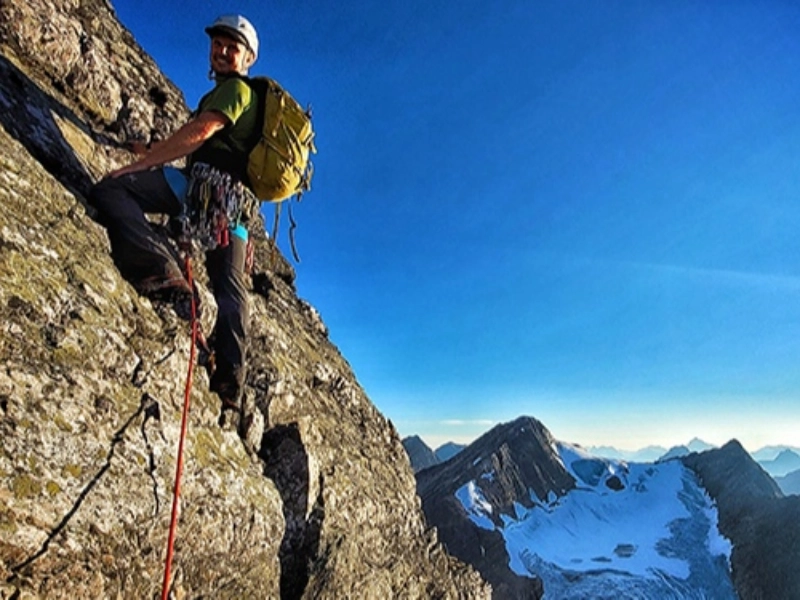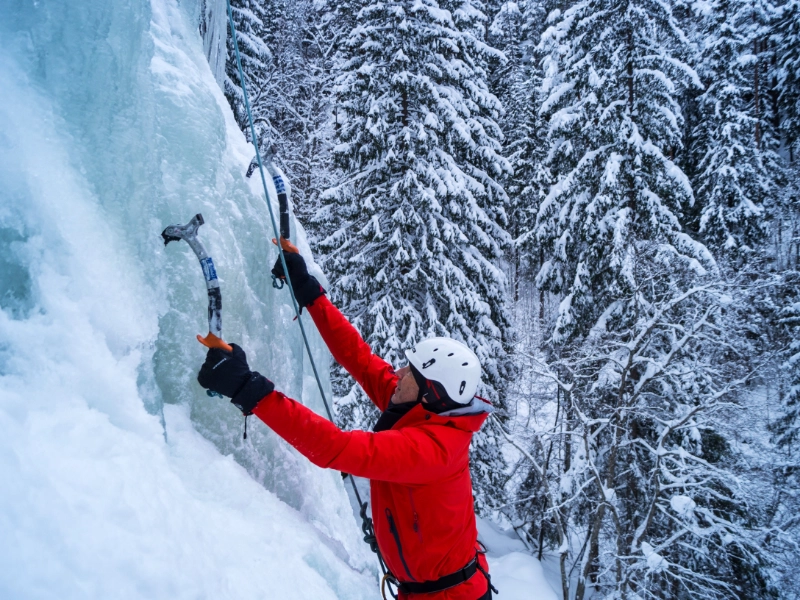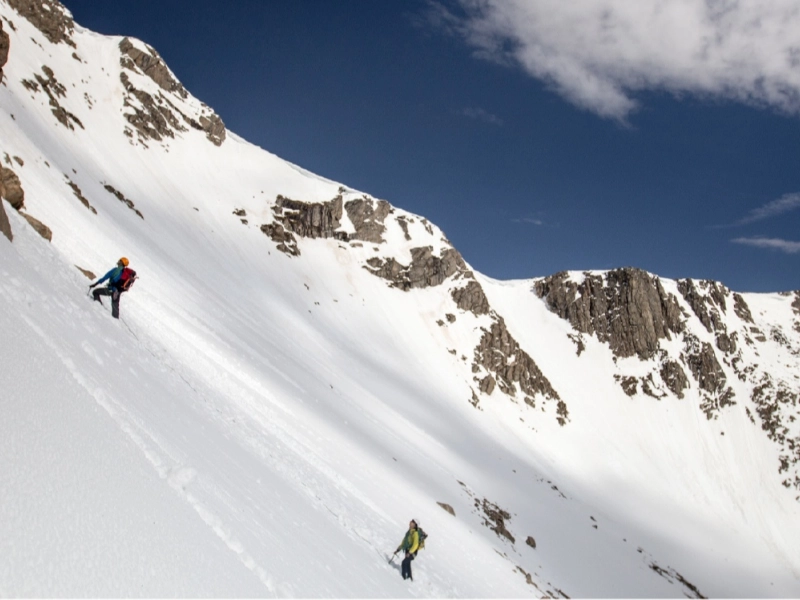An intense physical activity that increases endurance and cardiovascular fitness is mountain climbing. It also increases physical strength and lowers stress, all of which contribute to overall wellness. Climbing can also assist you in overcoming phobias that prevent you from pursuing other life goals, including returning to school or requesting a raise at work.

 Ice climbing is an extremely hazardous type of mountaineering that calls for a high level of expertise. Climbers have been known to suffer major cuts and break limbs in extremely dangerous falls on ice. It is advisable to begin ice climbing with a guide or knowledgeable companions who can assist you in learning the ropes if you are considering doing so.
For the ice to be firm enough for climbing, it must be extremely cold. Understanding the various ice climbing techniques is also crucial. The most popular method is German style, which entails planting the crampons' front tips by kicking into the wall with your feet.
It's crucial to remember that the surface is always shifting during ice climbing. A piece of ice that you knock off could fall on climbers below you if you fall. Using a running belay, in which the lead climber inserts screws as they ascend the hill to prevent the person following them from falling, is advised because this can be a very risky activity.
Ice climbing is an extremely hazardous type of mountaineering that calls for a high level of expertise. Climbers have been known to suffer major cuts and break limbs in extremely dangerous falls on ice. It is advisable to begin ice climbing with a guide or knowledgeable companions who can assist you in learning the ropes if you are considering doing so.
For the ice to be firm enough for climbing, it must be extremely cold. Understanding the various ice climbing techniques is also crucial. The most popular method is German style, which entails planting the crampons' front tips by kicking into the wall with your feet.
It's crucial to remember that the surface is always shifting during ice climbing. A piece of ice that you knock off could fall on climbers below you if you fall. Using a running belay, in which the lead climber inserts screws as they ascend the hill to prevent the person following them from falling, is advised because this can be a very risky activity.
 Climbers utilize a rope, their feet, and technique to mount rugged walls and cliffs. People of different ages, genders, and backgrounds enjoy rock climbing. It does require a lot of focus, but not a superhuman six-pack and fifty pull-ups.
Climbers rate a route using a system of points called grades to express how difficult they believe it to be. A route's grade can be affected by a variety of elements, including the ascent's slope, the quantity and quality of handholds, the spacing between holds, the degree of advanced technical maneuvering needed, and more.
The tenth highest peak in the world, Kangchenjunga in Nepal, is regarded as one of the most difficult climbing routes ever. With storms and avalanches claiming scores of lives in previous years, it has a 40% summit fatality rate. In Patagonia, Cerro Torre is a rugged granitic spire that ranks among the most difficult in the Western Hemisphere. It is the most hazardous climb of its kind due to its steep inclination, complex design, and glacial elements.
Climbers utilize a rope, their feet, and technique to mount rugged walls and cliffs. People of different ages, genders, and backgrounds enjoy rock climbing. It does require a lot of focus, but not a superhuman six-pack and fifty pull-ups.
Climbers rate a route using a system of points called grades to express how difficult they believe it to be. A route's grade can be affected by a variety of elements, including the ascent's slope, the quantity and quality of handholds, the spacing between holds, the degree of advanced technical maneuvering needed, and more.
The tenth highest peak in the world, Kangchenjunga in Nepal, is regarded as one of the most difficult climbing routes ever. With storms and avalanches claiming scores of lives in previous years, it has a 40% summit fatality rate. In Patagonia, Cerro Torre is a rugged granitic spire that ranks among the most difficult in the Western Hemisphere. It is the most hazardous climb of its kind due to its steep inclination, complex design, and glacial elements.
 The mountains of the world present a range of difficulties for climbers. For individuals equipped with the proper gear, technical know-how, and the determination to complete their objectives, climbing may be an exciting and dangerous activity, ranging from the traditional alpine climbs of the Matterhorn and the Eiger to the jagged peaks of the Karakoram.
The most challenging mountaineering routes call for a trifecta of rock, ice, and snow climbing skills. The sport can be risky due to its steep inclines, unpredictable weather, and challenges in identifying possible dangers. A significant fall can have disastrous consequences, particularly on ice descents where self-arrest is useless. To avoid such a disaster, having a solid Plan B is imperative.
The mountains of the world present a range of difficulties for climbers. For individuals equipped with the proper gear, technical know-how, and the determination to complete their objectives, climbing may be an exciting and dangerous activity, ranging from the traditional alpine climbs of the Matterhorn and the Eiger to the jagged peaks of the Karakoram.
The most challenging mountaineering routes call for a trifecta of rock, ice, and snow climbing skills. The sport can be risky due to its steep inclines, unpredictable weather, and challenges in identifying possible dangers. A significant fall can have disastrous consequences, particularly on ice descents where self-arrest is useless. To avoid such a disaster, having a solid Plan B is imperative.